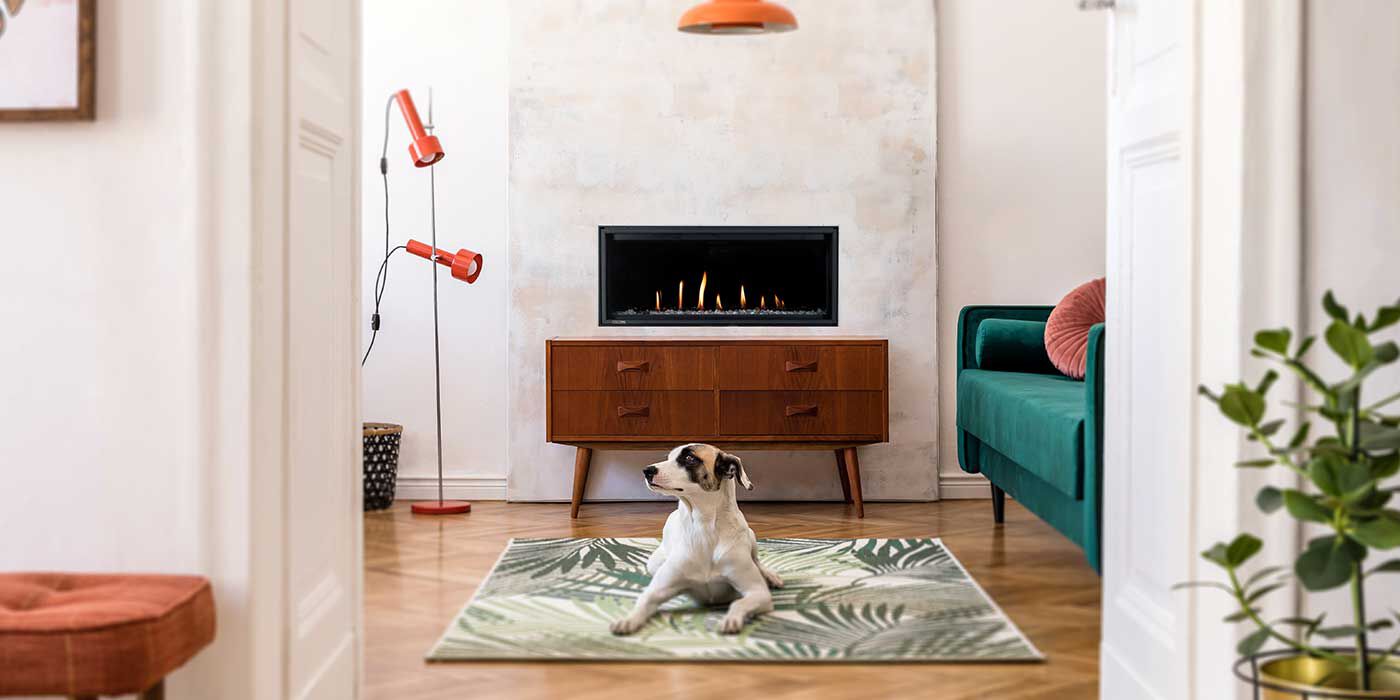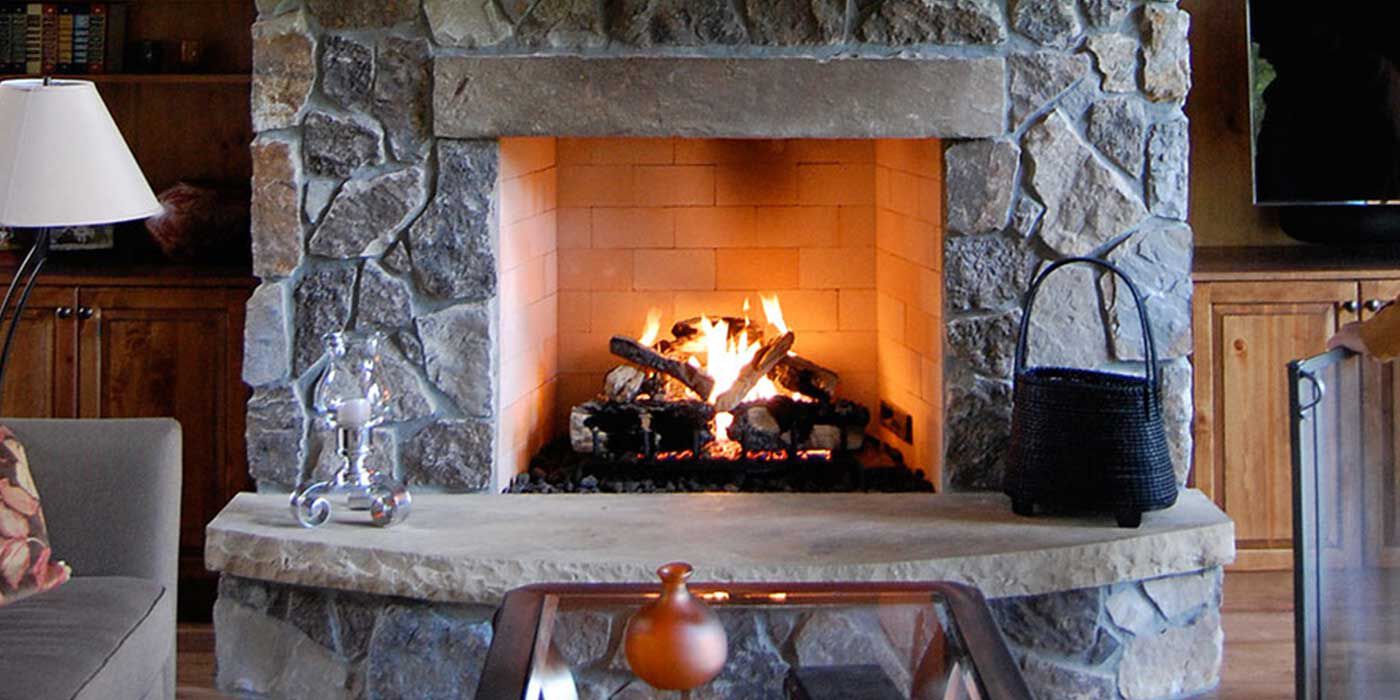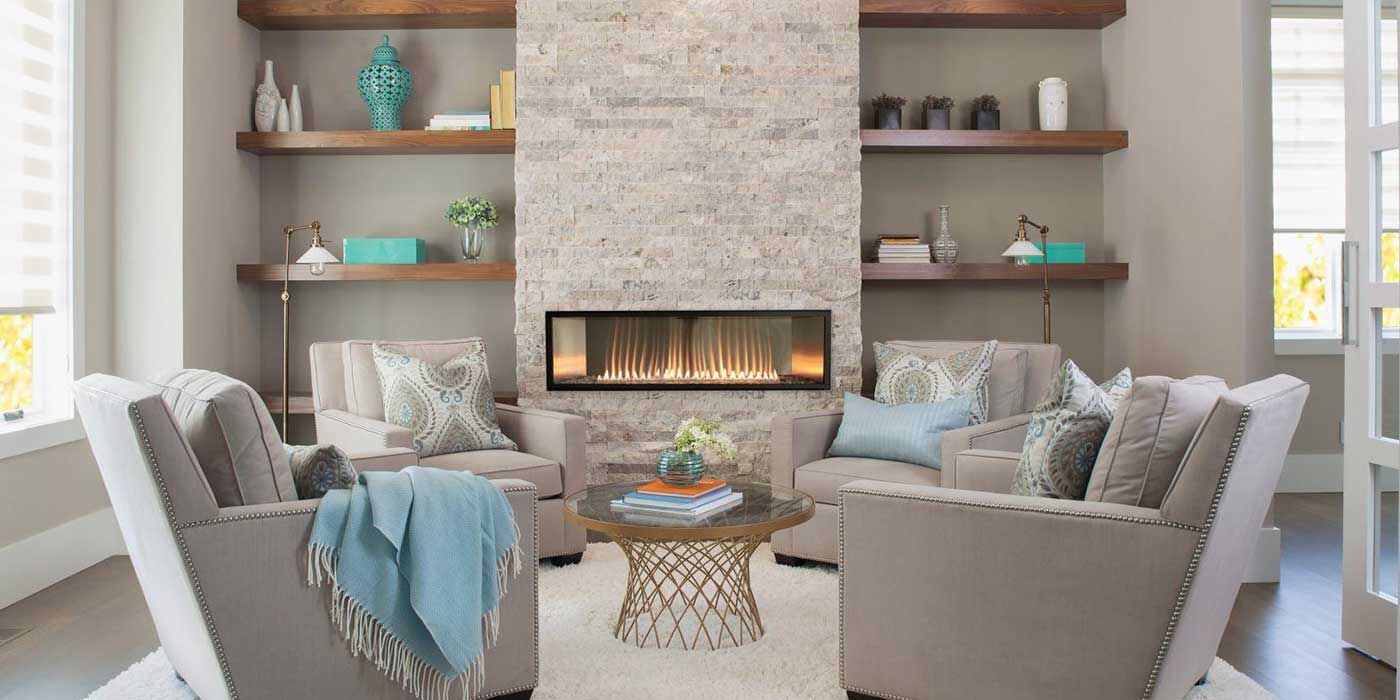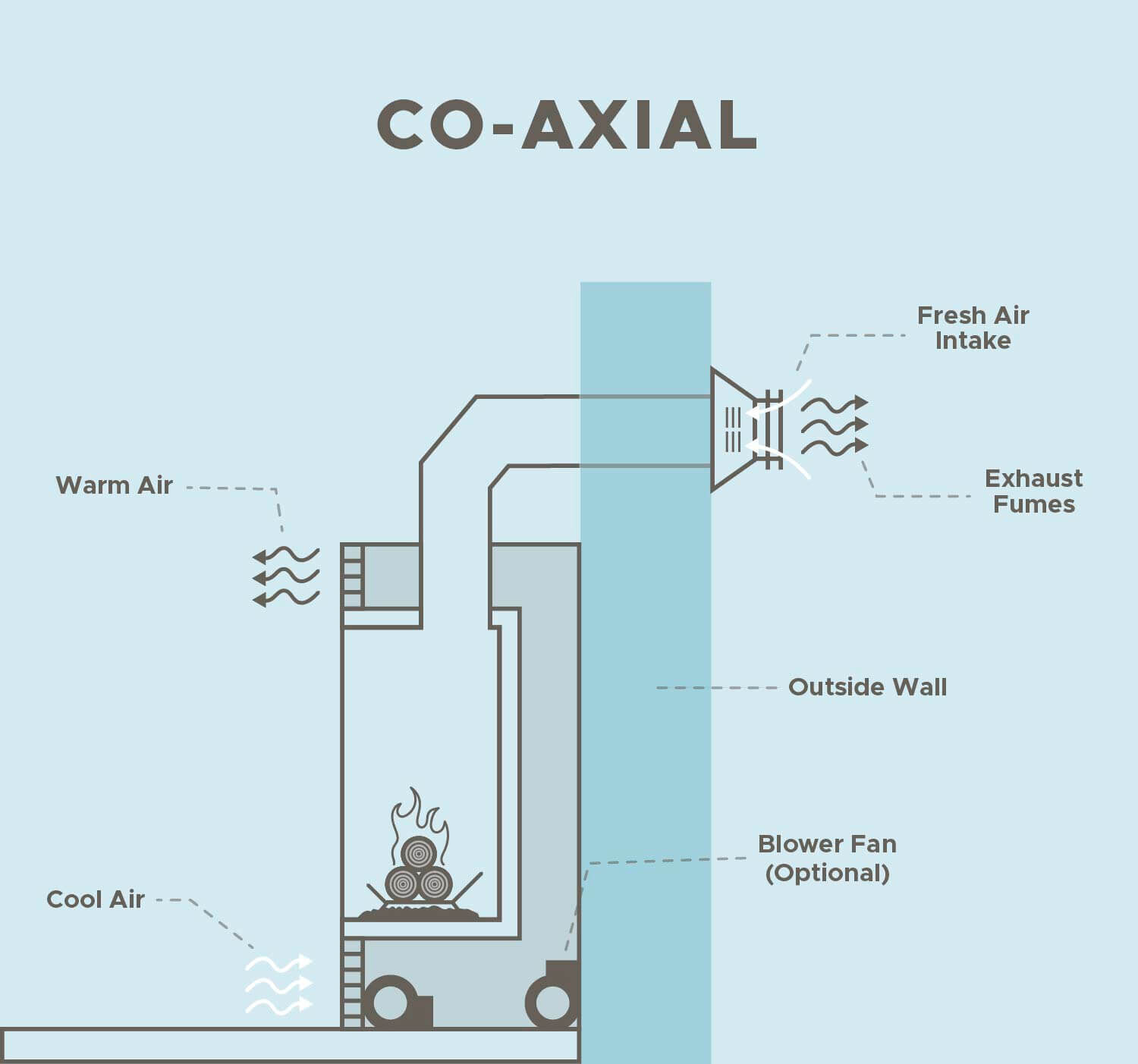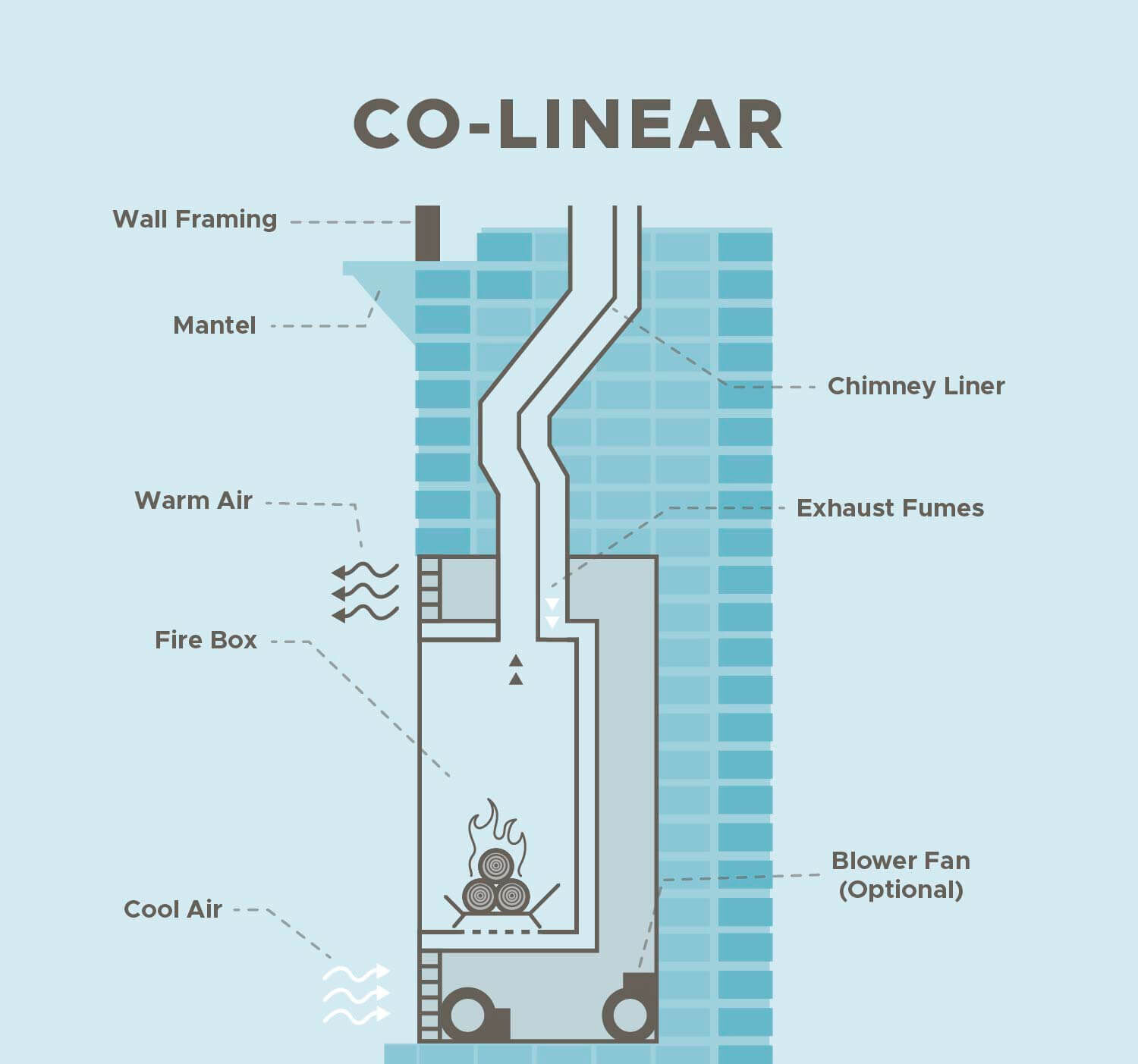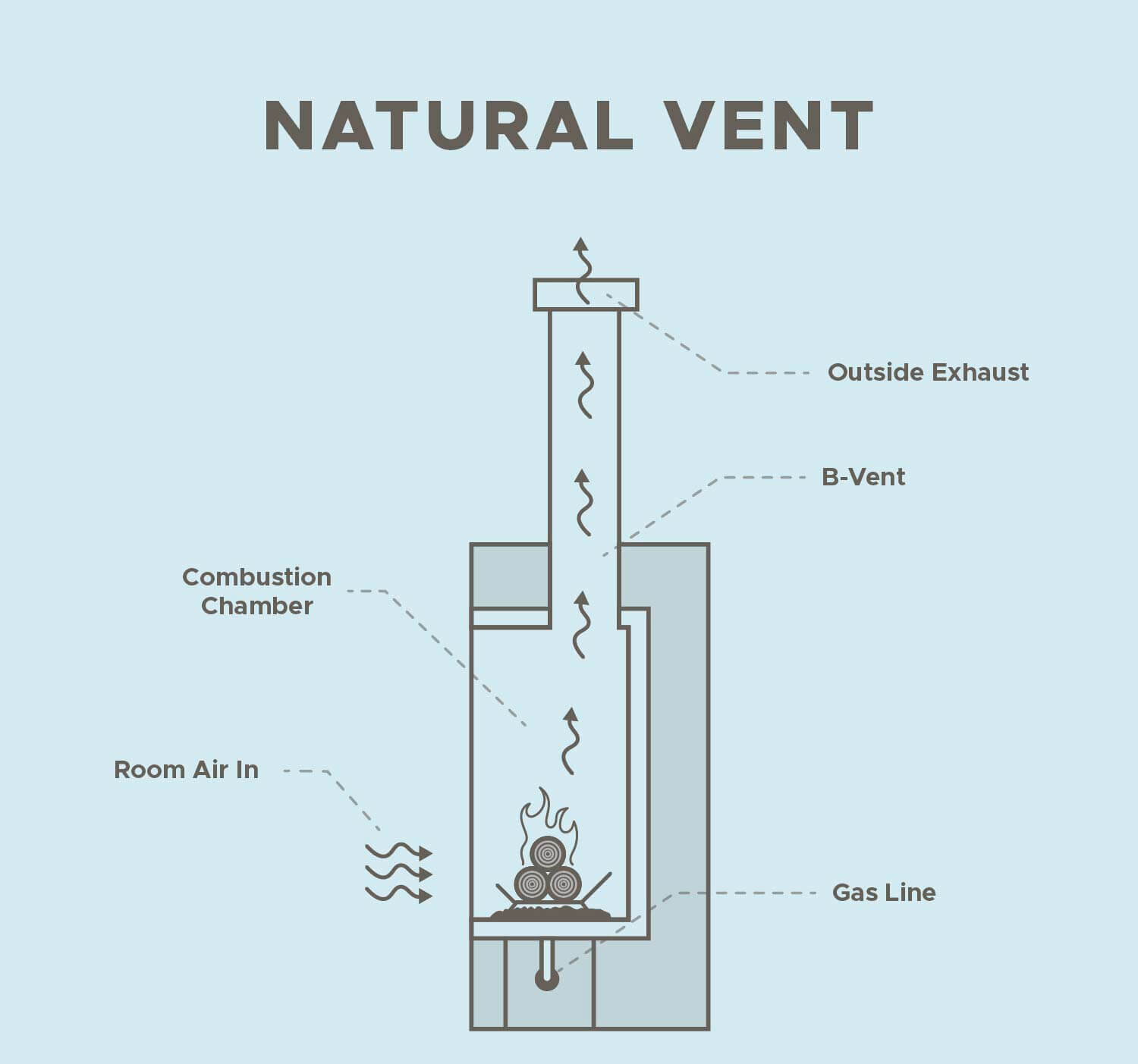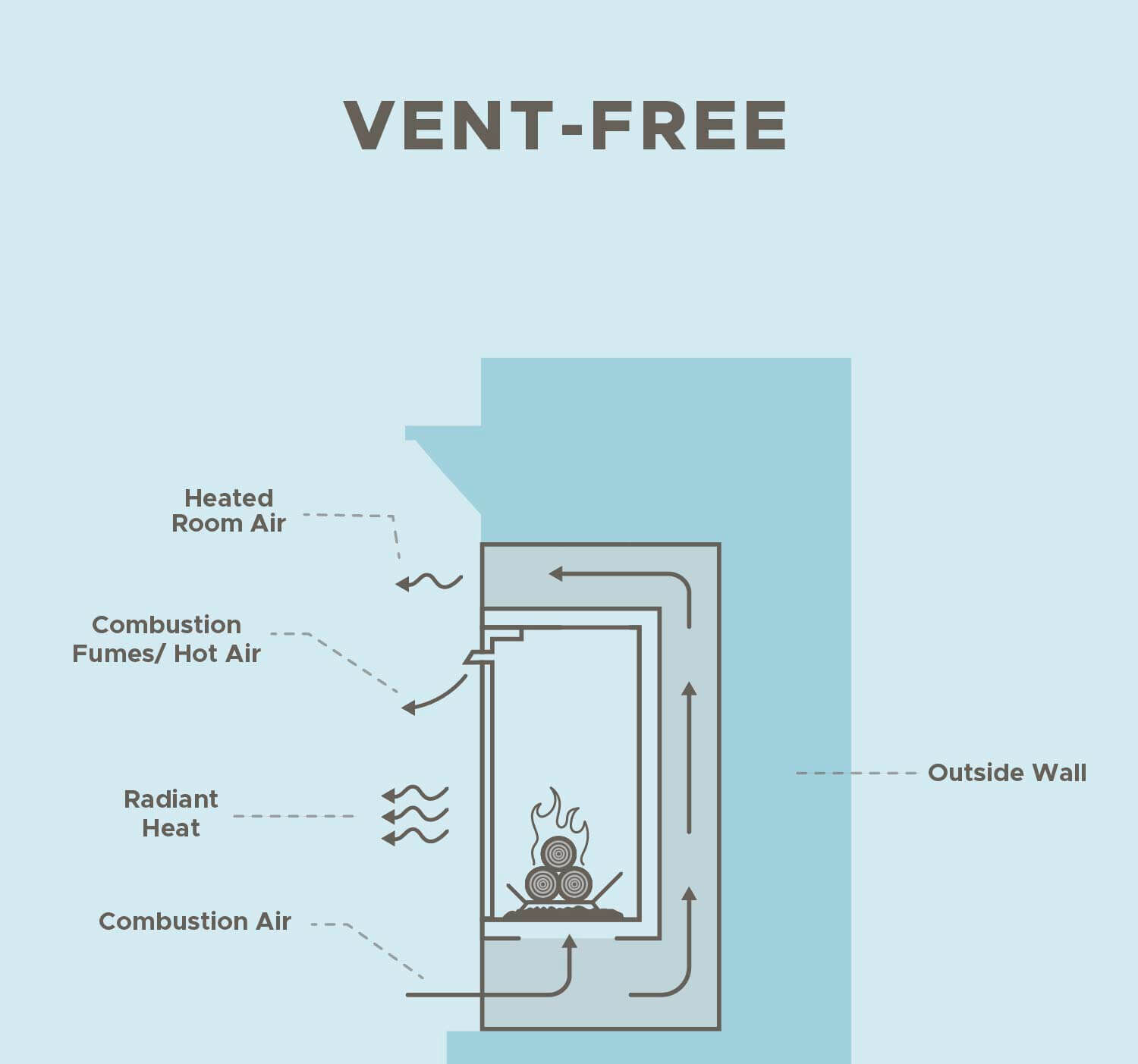Some gas fireplaces, stoves, and inserts rely on a venting system to remove harmful combustion byproducts from your home.
Venting a gas fireplace to the outside comes down to three important questions:
- What type of fireplace do you have?
- Where will you install your fireplace?
- Do you have a chimney?
Follow this guide to learn more about gas fireplace venting and determine what components you’ll need to complete your project.
Gas Fireplace Styles
Gas fireplaces come in three styles — Direct Vent, B-Vent, and Ventless.
Direct Vent and B-Vent fireplaces require two different venting systems, while Ventless fireplaces won’t need any venting.
Direct Vent
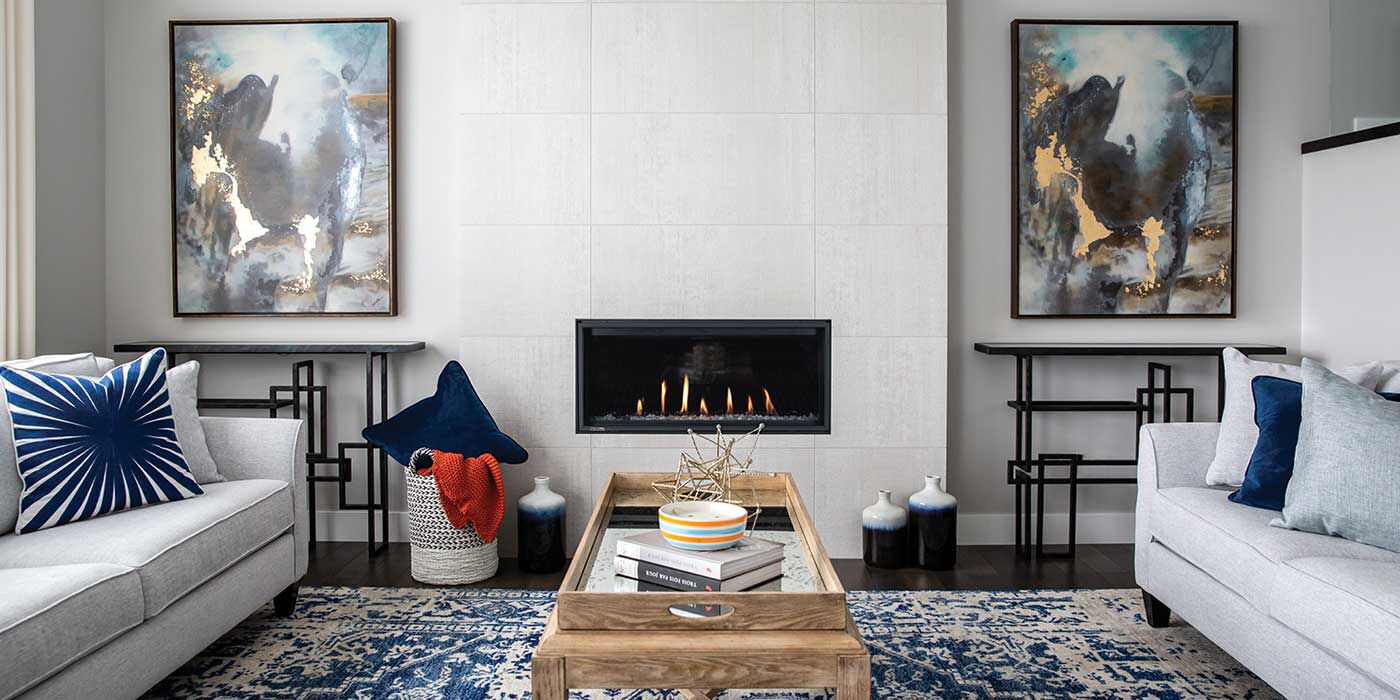
Direct Vent fireplaces use a sealed combustion system that protects your indoor air quality. It draws outside air in for the fire and expels 100% of the exhaust and byproducts outside your home. You can also purchase a power venting system for more installation flexibility.
Venting a Direct Vent Fireplace
Direct Vent fireplaces are the most common style. They’re safe, flexible, and don’t need an existing chimney to work properly.
Direct Vent units have a co-axial venting system, which consists of a small pipe nestled inside of a larger pipe. The system is installed in sections ranging from 4-48" long with 90-45° elbows for more flexibility with placement.
The inner pipe expels harmful byproducts to the outside. The outer pipe allows fresh air to flow into the firebox for combustion. The outer pipe also insulates the surrounding components and prevents them from overheating.
All Direct Vent gas fireplaces have a high-temperature glass panel that seals them off from the interior of your home. They protect your indoor air quality by using fresh air from outside and venting 100% of the combustion byproducts out of your home.
Horizonal vs Vertical Venting
Typically, Direct Vent fireplaces vent horizontally through a wall. However, you can vent them vertically through the roof if you have a chimney.
Installing your Direct Vent fireplace on an exterior wall and venting horizontally is simpler and more cost-effective. The process is as easy as running a pipe from the back of the fireplace out through the wall, then installing a termination cap.
If you’re converting a wood burning fireplace to gas with a Direct Vent insert, you’ll need to vent vertically. This will require a co-linear venting system, instead of a co-axial system.
In a co-linear venting system, two flexible aluminum pipes are installed in one long piece and run parallel to each other. One pipe pulls in fresh air, while the other expels exhaust and byproducts outside your home.
Power Venting Systems
Power venting systems can give you more freedom with your fireplace placement. These fan-powered systems can be installed in the vent run or at the termination point.
Power venting also allows for a longer vent run and more offsets in the vent run, so you can install your fireplace almost anywhere.
Venting a B-Vent Fireplace
Unlike Direct Vent fireplaces, B-Vent or "Natural Vent" units only vent vertically. They use a single, double-wall pipe to expel exhaust out through the roof.
B-Vent fireplaces are more compact than Direct Vent models, making them ideal for smaller spaces. However, they are more expensive and labor-intensive to install, especially if you don’t have a chimney.
Proprietary Pipe & Warranties
Many fireplace brands require you to purchase “proprietary pipe,” or venting products and adaptors provided by the manufacturer. Some units only require brand-specific adaptors, while other fireplaces will need all brand-specific venting components.
Be sure to read through your gas fireplace installation manual to determine the type of venting products you can use.
If you don’t use proprietary pipe for a gas fireplace that requires it, you’ll compromise the safety of your fireplace and likely void the warranty.
For assistance in determining whether you need proprietary pipe, please give our NFI certified experts a call at 800.919.1904.
Ventless Fireplace Requirements
The name says it all — Ventless gas fireplaces don’t require any kind of venting system. They’re a safe, hassle-free option for any area of your home.
Ventless units use an open system that draws in air from the room for combustion. Rather than routing the resulting gases to the outside, Ventless fireplaces are clean burning. They protect your indoor air quality with built-in Oxygen Deletion Sensors. The sensor will automatically shut down your fireplace if the oxygen level dips below a safe threshold.
These self-contained fireplaces are easy to install and excellent for supplemental heating, operating at nearly 100% efficiency. That means you can save money on your utility bills during the cold, winter months.
We’re Here to Help
Do you have more questions about fireplace venting? We’d love to help! Call our team of NFI certified experts today at 800.919.1904.
More Resources:
Explore our Gas Fireplace Buying Guide to find the perfect model for your home.
Discover the key differences between Direct Vent and Ventless fireplaces.
Follow these six maintenance steps to keep your gas fireplace in great condition for many years to come.
